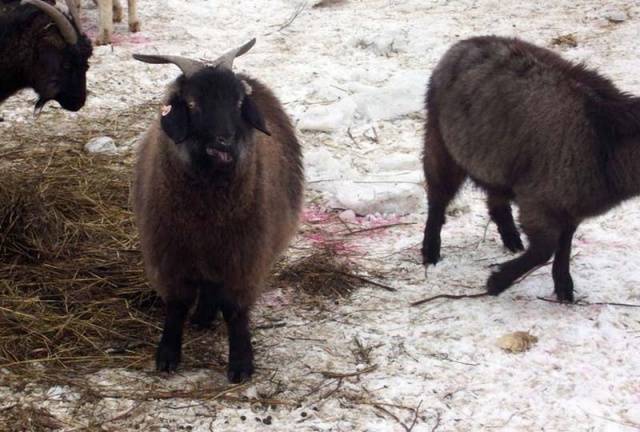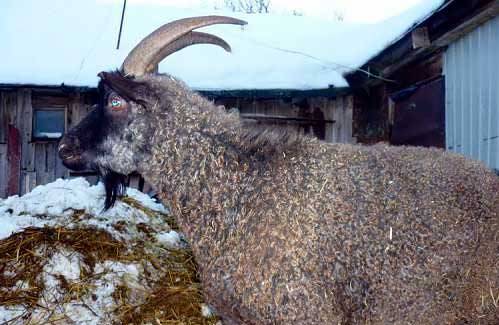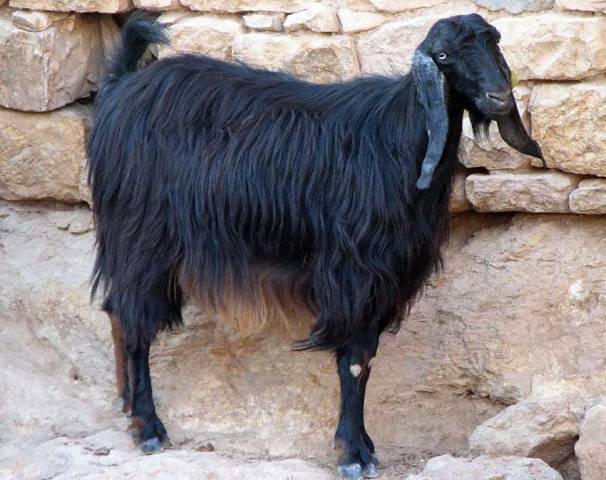Content
As you know, all existing breeds of goats are divided into: meat, dairy, down, wool and mixed. Each type has its own characteristics and advantages. Thanks to this, each farmer can choose a breed for breeding the desired type of productivity. But in this article we will look at the characteristics of downy goats, as well as the best breeds of this species.
Characteristics and features of downy goats
Downy goats are large animals with strong, well-developed bones. They have a deep chest and strong hooves. The wool of downy goats consists of dense hair and soft, light down. It is rare to find transitional hair, which in its structure is very similar to downy hair.
Downy goats, in turn, are divided into 2 groups, differing in the structure of their wool. The first includes the Orenburg breed, as well as admixtures of this type. This also includes goats bred in Kazakhstan, Kyrgyzstan, Uzbekistan, and the Altai Mountains. In this group, the awn is longer than the down and completely covers it. And the second group is distinguished by long down, which can be equal to the awn or longer than it. Such cover is typical for such breeds as the Don, Gorno-Altai, Uzbek black and Kyrgyz.
During the entire lactation period, females can produce from 200 liters to 300 liters of milk.Dairy species produce 2 times more milk, but do not forget that downy goats are not raised for the purpose of producing dairy products.
The most important thing in breeding downy goats is quality down. It is worth noting that more fluff is combed from the goats. The reason is most likely not in the productivity of the goat breed, but in the large size of male individuals. From one goat you can get up to 1.6 kg of fluff, and from a female you can get no more than 1.4 kg. These are the maximum figures, and on average the bouffant is about half a kilogram of fluff. The most productive are considered to be individuals aged 4 to 6 years. The coat of downy goats consists of 70% down. The average length of the down is about 8.5 centimeters, the length of the spine is 5.2 centimeters. The skins of young individuals are suitable for sewing outerwear (sheepskin coats and coats). Meat is used in cooking.
What are the differences between the best breeds?
Of course, the main advantage of the best breeds of downy goats is the presence of high-quality down. Thanks to a small amount of grease, the wool separates itself during shearing. They begin to comb out downy fibers during the molting period, when they are most easily separated. This process takes a lot of time and effort. You need to be very careful when combing and trimming goats.
The second combing is carried out half a month after the first. To do this, you need to purchase special tools. Also prepare a container for fluff in advance.
The most valuable and expensive is the fluff obtained after the first combing. It differs in quality and color.White and gray fluff is most valued. It is from this fiber that the well-known down scarves are knitted.
But, in addition to high-quality fluff, the best downy goats have high fertility, produce a large amount of milk, and are also valued for tasty meat and high-quality skins.
But these are not the only downy goat breeds that can boast of the quality of their raw materials. We will talk about these and other downy goats in this article.
Orenburg breed
These goats are quite large in size and have a strong build. Females can weigh up to 60 kilograms, and bucks can weigh about 90 kilograms. Most often they are black in color without splashes of another color. The wool has a braided structure, very thick and soft. These animals are prolific. They are bred to obtain high-quality fluff, but their wool is of average productivity. From one individual you can get half a kilogram of fluff.
This breed was bred by breeders in the Orenburg region. These animals are distinguished by their high endurance to various weather conditions. Weather changes have a very positive effect on the quality of down. The formation of a warm coat is influenced by:
- severe frost;
- wind;
- drought.
Representatives of Orenburg goats can adapt to any climatic conditions. And thanks to the quality of the resulting fluff, they are considered one of the best breeds. Animals produce little milk. High quality meat, making up 40–45% of the carcass weight.
Pridonskaya breed
One of the most ancient breeds. She was bred and bred in the area of the Don River. The breed was created by crossing local species with Angora goats. The color of the coat can be white, gray, black and various shades of these colors. The body is strong and well developed, the limbs are strong. At birth, a kid can weigh about 2.5 kilograms. An adult goat weighs up to 70–80 kg, and a female goat weighs up to 40 kg. Don goats are prolific.
The wool of the Don goats consists of:
- 68–75% – fluff.
- 25–32% – awn.
The wool has the same length and thickness. The fluff is much longer than the spine, and can grow up to 10 cm, and the spine, respectively, up to 7 cm. The coat consists of 80% high-quality fluff. Up to 1.5 kilograms of fluff, gray or white, can be combed out of one individual.
Don goats were exported to India and Mongolia to crossbreed with local goats and obtain more productive species. The skins are used for making clothes and shoes. The meat is of good quality; from one individual you can get up to 10 kilograms of slaughter yield. Farmers love these animals for their unpretentiousness and adaptability to any climate.
Gorno-Altai breed
The name clearly shows that the breed was bred in Altai. The Don breed was taken as the basis. The result of the breeders' work can be assessed in the photo. The animals are very hardy and can live in pasture conditions all year round. They gain weight quickly and have high quality meat. Goats of the Gorno-Altai breed can weigh about 65 kilograms, and females - up to 40 kilograms. Meat can make up up to 75% of the entire carcass.The fertility of the breed directly depends on the pastures and living conditions; on semi-desert pastures, two kids are rarely born at once.
The amount of fluff in Mountain Altai goats is 3 times higher than that of the Altai breed. Up to 600 grams of pure fluff is combed from one individual. Its length can reach up to 8–9 cm. The wool consists of 60–80% fluff.
The quality of the down is high. It is soft, strong and elastic. Suitable for various down products. A special feature of scarves made from it is the shine of the products. While most breeds have a more matte texture. The Gorno-Altai breed is profitable to breed even on small home farms. The animals gain weight quickly, and fattening them will be quite easy.
Angora breed
Angora goats are quite small in size, but this does not stop them from being the largest source of Mohair. Usually these animals are white, although sometimes there are individuals of gray, silver and black color. The weight of an Angora goat can be up to 60 kg, and the female can weigh about 35 kg. The animals have a short body and a small head. The chest is shallow and narrow. The limbs are strong, although short. The body is completely covered with thick shiny hair. It is curled in long braids. The length of the strand can be about 30 centimeters.
Angora goats are not afraid of changing weather conditions and can adapt to any climatic conditions. They can be kept on mountain pastures; goats are not picky about food. It is believed that the Angora breed was used to breed most other wool species.
Black downy breed
This breed of goat was bred in Uzbekistan.The animals have black fur, which is why the breed got its name. A buck can weigh around 50–55 kg, while a female can weigh 40–45 kg. The coat is heterogeneous. The down is quite long, although it can be the same length as the awn. The spine of these animals is thick and shiny, but the down is matte and very thin.
In terms of the quality of fluff, black goats are very similar to the Don goats. From one individual you can get from 300 g to 500 g of raw materials. The length of the down depends on the sex of the animal. In goats it can grow up to 10 centimeters, and in females – up to 8 centimeters. Animal skins are used to make shoes.
Conclusion
So, we have looked at the best breeds of downy goats. Based on their description, we see that breeding such animals is highly profitable. From them you can get excellent fluff for all kinds of products, skin, which is used in the manufacture of clothes and shoes, high-quality meat and milk. At the same time, the animals do not require complex care and are not picky about their diet. They can graze on pastures, as the photo shows, and this will be enough for full growth. You can breed downy breeds of goats at home, on small farms and large enterprises.


















